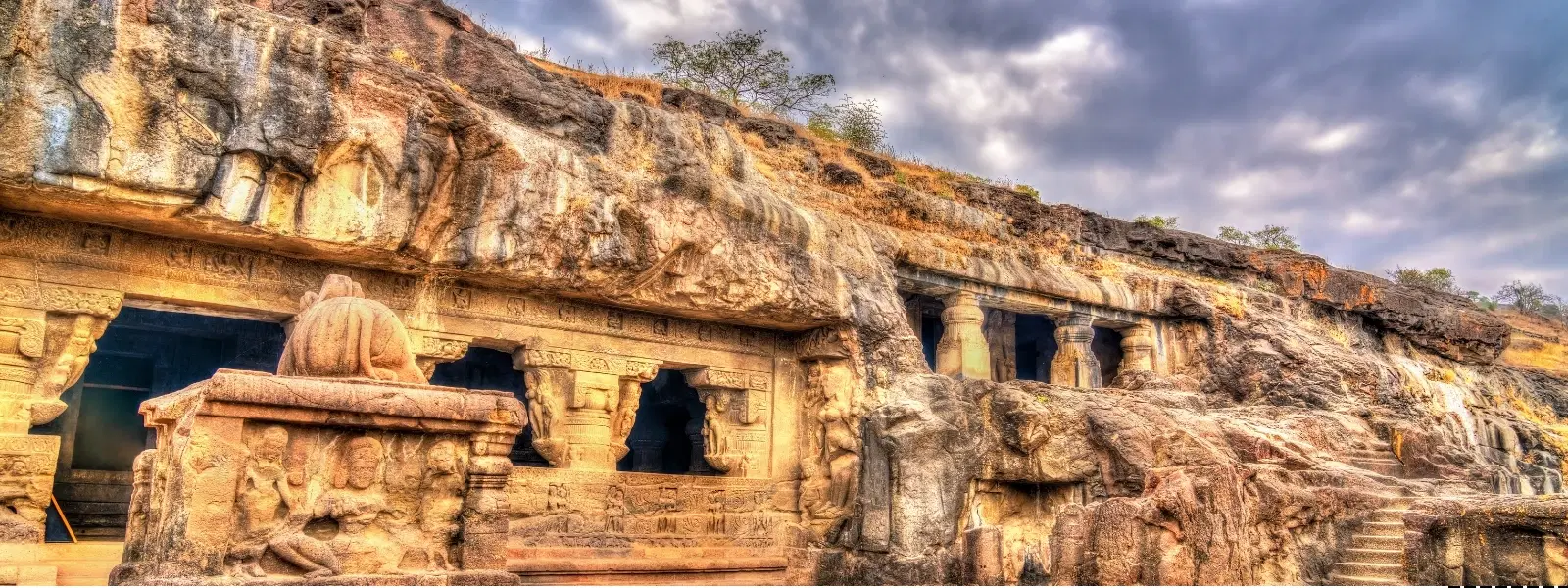
Hotels
•04 min read

Imagine stepping into a world where ancient artistry meets spiritual devotion, carved meticulously into rock. Welcome to the Varaha Cave Temple in Mahabalipuram—a masterpiece of Pallava architecture that combines myth, history, and stunning craftsmanship. As you explore these ancient reliefs, you'll uncover fascinating facts about their historical origins, architectural marvels, and enduring cultural significance.
The Varaha Cave Temple is a product of the Pallava dynasty, whose reign left an indelible mark on India's rock-cut architecture. Emerging in the 7th century CE, the Pallavas were pioneers in carving temples directly from the rock, blending natural formations with human ingenuity. The timeline of the temple’s construction coincides with a period of great artistic innovation and religious devotion, making it a crucial landmark among Mahabalipuram ancient temples.
Central to the temple's allure is its depiction of the Varaha incarnation of Vishnu. This mythological figure, representing the boar avatar of Vishnu, is beautifully rendered in the reliefs as he lifts Bhudevi, symbolizing the rescue of the Earth. The intricate carvings are not merely decorative; they are a visual narration of divine intervention and spiritual ideals cherished by the Pallava dynasty.
The design of the Varaha Cave Temple is a testament to the genius of Pallava art and culture. Carved out of solid rock, its layout seamlessly blends with the natural contours of Tamil Nadu’s geology. Unlike freestanding structures, the temple appears as though it has been nurtured by the very rock it inhabits. This integration of structure and stone sets it apart from other rock-cut cave temples in Tamil Nadu.
One of the most captivating features of the temple is its intricate relief carvings. Each detail, from the depiction of the Varaha lifting Bhudevi to the graceful renderings of deities, reflects the mastery of Pallava period relief carvings. The sculptors employed advanced techniques such as chiseling and polishing to enhance the depth and finish of the murals, a method that has allowed these ancient artworks to stand the test of time.

The reliefs of the Varaha Cave Temple are steeped in symbolism. Every carved gesture and motif is crafted with a purpose, mirroring the devotion of the Pallava dynasty to Hinduism. The intricate narratives not only celebrate mythological events but also serve as spiritual guides, conveying messages of divine rescue, cosmic order, and the eternal dance between good and evil.
As part of the larger Mahabalipuram UNESCO heritage site, the Varaha Cave Temple holds significant religious importance. It acts as a crucial link in the series of monumental structures that paint the historical and spiritual canvas of this ancient town. Together with other Mahabalipuram religious monuments, it narrates a story of devotion, architectural innovation, and a celebration of life’s deeper meanings.
Beyond its historical and mythological value, the temple hides stories that often escape the casual observer. Some experts suggest that subtle symbols in the carvings allude to secret rituals and age-old traditions. These lesser-known details invite visitors to look closely, rewarding those who pause to appreciate the layer of mystery and ingenuity embedded within this ancient monument.
The Varaha Cave Temple not only stands as an icon of its time but also as an influential precursor to later rock-cut temples in Tamil Nadu. The artistic innovations and sculptural techniques perfected here have inspired architects for centuries. Its legacy continues to shape modern interpretations of historical narratives, ensuring that the spirit of the Pallava dynasty endures in contemporary design and architecture.
For those planning a visit, the Varaha Cave Temple offers an immersive journey into the heart of ancient India. The best times to visit are during the cooler months, when the weather is ideal for exploring outdoor attractions. Situated among other Mahabalipuram ancient temples, it is easily accessible with ample outdoor spaces perfect for leisurely walks. Whether you are a wanderer seeking adventure or a planner looking for a culturally enriching destination, Mahabalipuram welcomes every traveler with a promise of awe-inspiring history.
When capturing the beauty of the temple, remember to respect its solemn ambiance. The detailed carvings offer a plethora of photo opportunities, highlighting the smooth interplay of shadow and stone. Visitors are encouraged to take photos that honor the site's historical significance, while being mindful of ongoing preservation efforts aimed at maintaining this invaluable cultural heritage.

Did you know? The Pallava sculptors used a combination of chiseling and polishing techniques to create the Varaha Cave Temple reliefs, ensuring the carvings retained their intricate details for centuries.
The rock relief in Mahabalipuram refers to intricate carvings and sculptures created on natural rock formations, showcasing mythological and historical themes.
The Varaha Cave Temple was built during the Pallava dynasty in the 7th century CE, reflecting their deep devotion to Hinduism and mastery of rock-cut architecture.
Mahabalipuram temples are renowned for their UNESCO World Heritage status, exemplifying ancient Pallava artistry and the religious significance of meticulously carved rock formations.
The Ratha temples are monolithic structures carved out of single rocks, representing chariots, and are celebrated for their precise execution and architectural brilliance.
The Varaha Cave Temple stands as a testament to the artistic and spiritual legacy of the Pallava dynasty. Its intricate reliefs, mythological significance, and architectural brilliance make it a must-visit landmark for history enthusiasts and travelers alike. By studying its detailed craftsmanship and exploring its hidden stories, one gains a deeper appreciation for India’s rich cultural heritage and the timeless allure of Mahabalipuram’s sacred monuments.